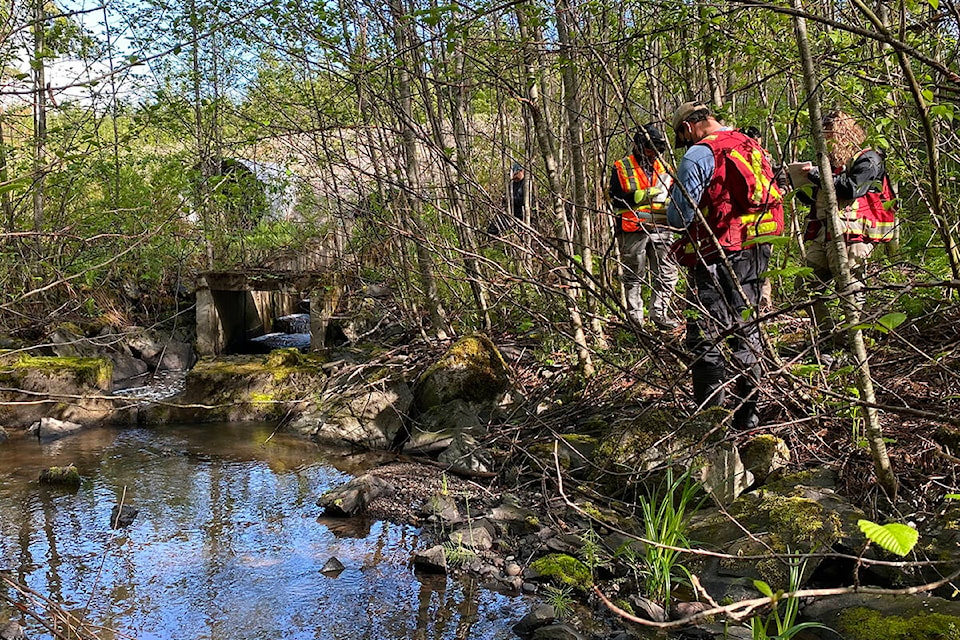A SkeenaWild Conservation Trust project saw workers breaking beaver dams and restoring the ecosystem of Willow Creek this summer.
The work was focused on the riparian zone of the creek — the area directly on either side of the creek that influenced by water. Riparian zones are characterized by rich soils, distinctive vegetation and high biodiversity.
Willow Creek is located north of Terrace, and is a tributary of Spring Creek, which is in turn a tributary of the Kitsumkalum River.
Sarah Railton, the registered professional forester contracted to work on the project, said that forestry techniques from 60 to 70 years ago meant that the area was logged right up to the stream, leaving no room for buffer riparian vegetation.
“Generally what happens after the riparian area is cut down or are logged or burned is you get an increase in the water table, so the water that all the trees were sucking out of the ground is there on site,” she said.
“Then you get tree species that are very water loving establishing there, so that’s willows and alder generally.”
Those types of trees and brush that spring up after logging operations choke out longer-lived species like spruce and cedar.
The new alder and willow species attract beavers, which cause a new set of problems. Dams create a physical barrier to fish, and create a backlog of water.
“When you have the backup from the beaver dams, you get a situation where the silt is not traveling downstream, and instead it’s settling in the beaver pond areas. So that leads to covering up of the important spawning gravels that fish would use to lay their eggs,” Railton said.
The silt increases the turbidity of the water, which in turn raises the water temperature and lowers the available oxygen.
In June, Skeena Wild received a $125,000 grant to restore the creek. Funding was through the Real Estate Foundation of BC and Watersheds BC’s Healthy Watersheds Initiative, with financial support from the provincial government.
The aim of the grant was to create jobs for demographics hit hardest by the COVID-19 pandemic, such as youth, Indigenous people and women.
In total there were a mix of nine full and part-time positions created for the restoration work. Those people, along with contractors from Westland Resources like Mitch Drewes breached beaver dams, manually pulled out invasive plants and inventoried important plant species for the Kitsumkalum First Nation with plans to create a map.
“All of the work we did was done manually with chainsaw and Pulaski (combination of an axe and adze) and human effort,” Railton said. “It’s tough work, people in waders and getting their hands dirty.”
Railton said that there were over 30 dams identified, and workers were not able to breach them all this summer. However, the project is ongoing and Skeena Wild plans to leverage the work already done to continue breaching dams and even plant cedar to bring back the original riparian vegetation.
“It’s been a real pleasure and honour to take on this work on behalf of the community, and it’s been great to do some physical restoration work out there and really see some results.”
